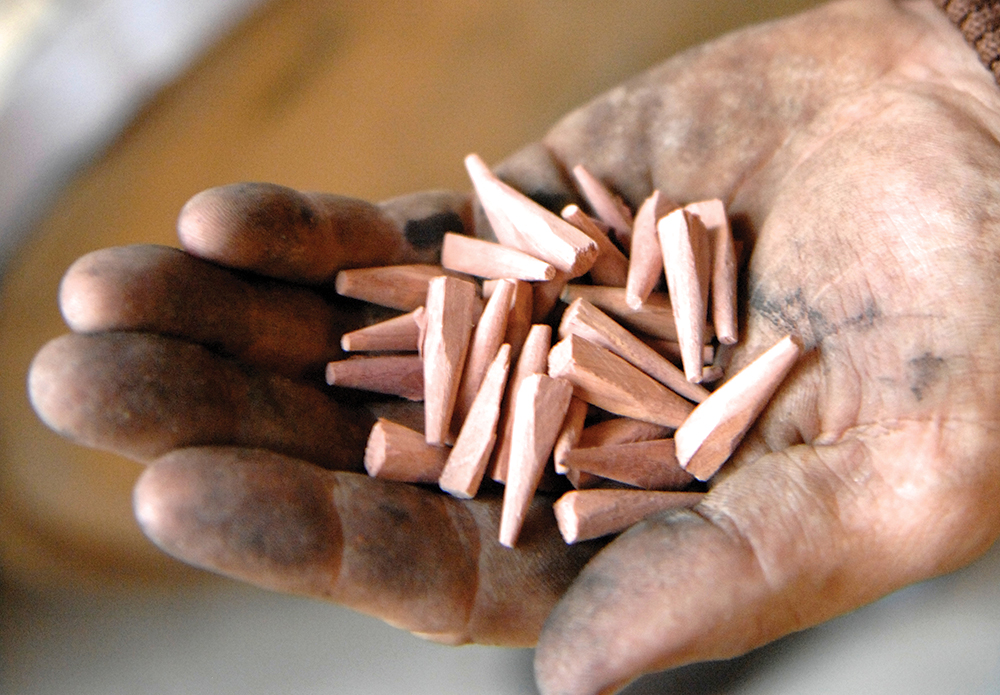Five Sources of Flavor
The five vital factors resulting in a truly great bourbon.
Article by Fred Minnick
1. Grain
According to U.S. federal laws, bourbon must be made from at least 51 percent corn. Most brands usually pack roughly 70 to 80 percent corn and are mixed with common secondary grains wheat, rye, and barley. There’s no law indicating that wheat, rye, and barley must be used as the small grains; it just so happens that tradition and operations are set up for rye and wheat. Corn yields sweeter-tasting whiskeys, which is a major reason why bourbon tastes sweeter than Scotch. But, when you add wheat to the mashbill, there’s an extra layer of sweetness. When rye is added, spice kicks in. The less common “wheated bourbons” or “wheaters” include Larceny, Maker’s Mark, Old Fitzgerald, Pappy Van Winkle, and Weller brands. My favorite wheater for the money is Weller 12-year-old. For around $25, Weller 12 delivers layer upon layer of vanilla and caramel and a rich smoothness that’s hard to find elsewhere.
2. Water
When the water is added to milled grain, it becomes a mash. In Kentucky, we make a big deal out of our limestone-filtered water. This clean water is why 95 percent of the country’s bourbon is made here. Limestone filters out iron, sulfur, and other impurities that are often found in surrounding states’ water sources. Would you rather drink bourbon made from naturally limestone-filtered water or human-filtered water? The mash is then cooked and cooled and pumped into a fermenter.
3. Fermentation
In the fermenter, the mash is cooled down to about 65 degrees and yeast is added. The yeast feeds on the mash’s sugar, while excreting carbon dioxide and creating alcohol. Distillers use their own proprietary yeasts to influence their desired fermentation and flavor profiles. Four Roses is the most open about its yeast strains. With five proprietary yeast strains, the bourbon brand is able to create 10 recipes. For example, the Four Roses “OBSF” recipe combines a mashbill of 60 percent corn, 35 percent rye, and 5 percent malted barley with its “F” yeast; while the “OBSO” uses the exact same mashbill but with the “O” yeast. Tasting the OBSF next to the OBSO shows how influential yeast can be. The F is more fruity than O, a very floral yeast. After three to five days of sitting, with gas bubbles popping and sugars converting to alcohol, the mash is now a rudimentary alcohol that’s essentially beer. This mash is pumped into the still.

4. Distillation
One of the greatest differences between the production process of Scotch and bourbon is Scotch makers skim off the grains and only distill the fermented liquid known as a “wash,” while bourbon makers send the whole fermented mash to the still. In the still, the fermented mash’s solids are heated to about a non-boiling 205 degrees, which sends alcohol vapors up the still. The alcohol vapors are captured, cooled, and condensed. The law dictates bourbon must come off the still at not more than 160 proof and must enter a “new charred oak” container at not more than 125 proof.
5. Maturation
Without a doubt, maturation is the most important process of making bourbon. The law states that bourbon must be stored in “charred new oak containers.” Most distillers are using new American oak to create their products. With that said, the new charred-oak barrel is where bourbon derives its color and most flavor. Foresters select tall straight oak trees, cut them into staves, and send them to a cooper, who will air-season, toast, and char the wood at various time-measured durations. The most common char is the char No. 4 or about 55 seconds, which makes the stave look like alligator skin. When the clear distillate is poured, the barrel quickly starts chemically changing the whiskey. Oak’s tyloses gives flavors of vanilla, caramel, spice, toast, smoke, coconut, coffee, and mocha; while the charred insides filter out organosulfur components. As it’s aging, about 3 to 5 percent of the whiskey is lost to evaporation for what’s known as the “angel’s share.” But, what if a single stave was more porous than the others? It could leak and suddenly the barrel is losing up to 15 percent of whiskey a year. That will greatly change the flavor.
It’s also a reminder of why I love buying single-barrel bourbons. No two barrels ever taste the same.





